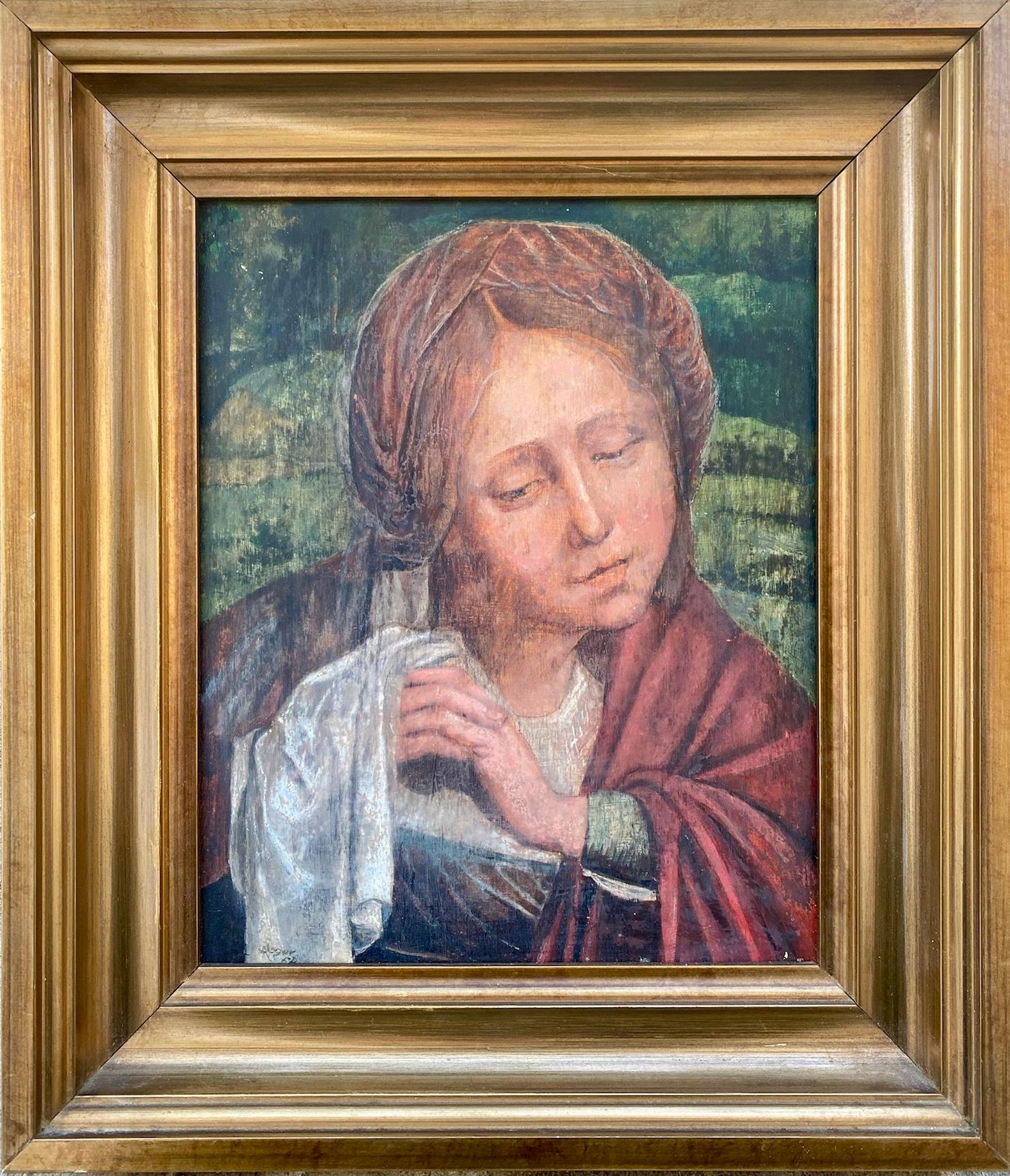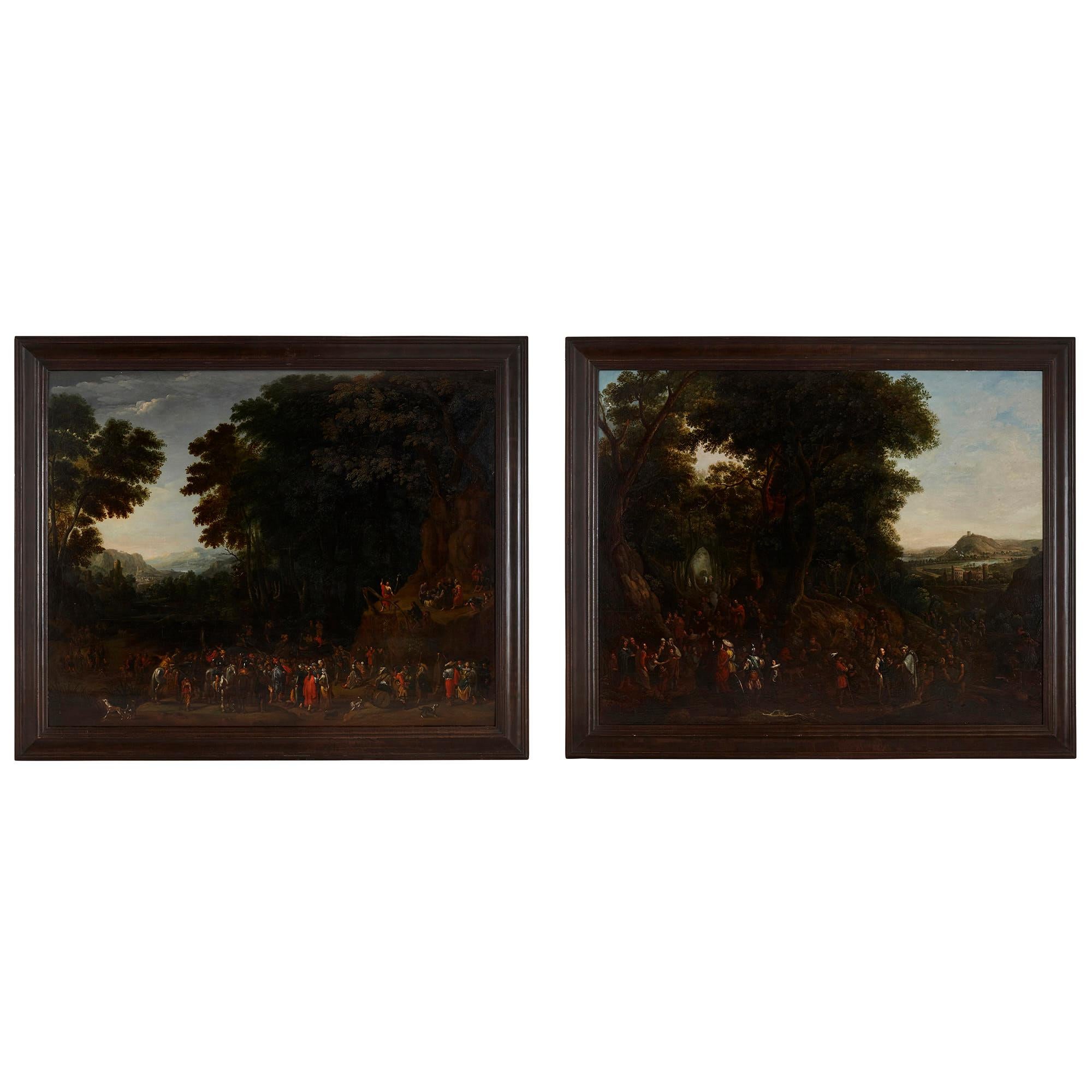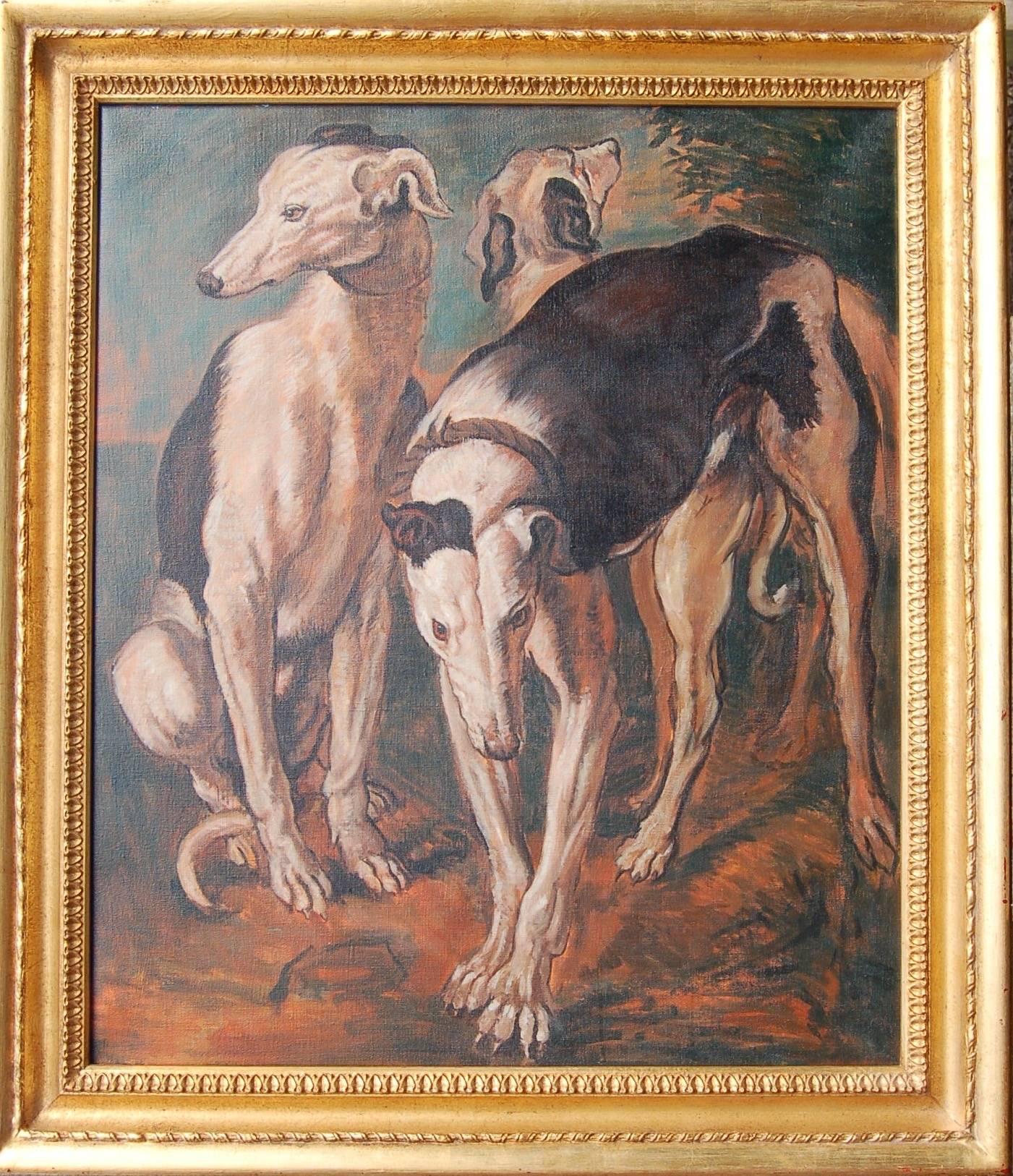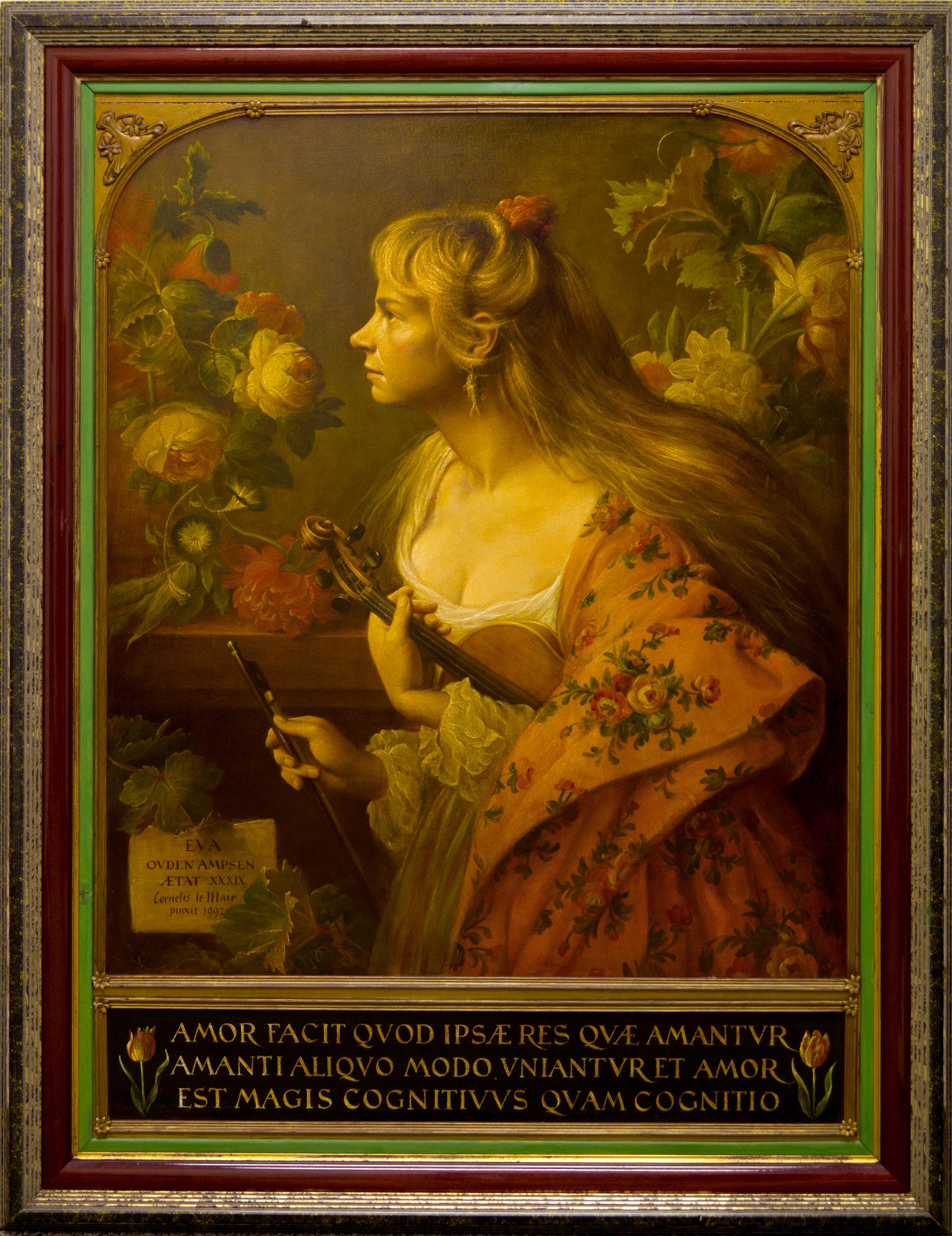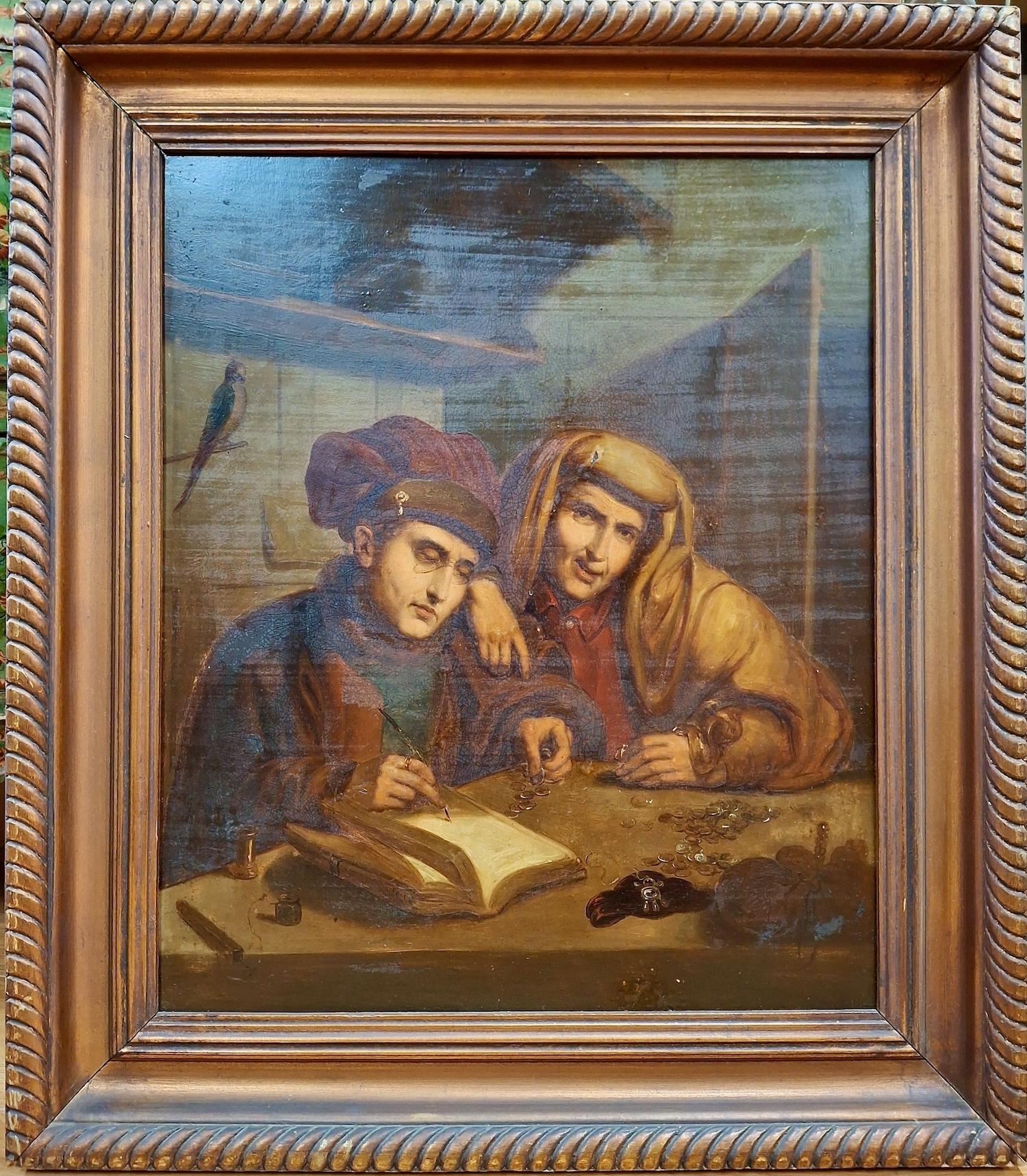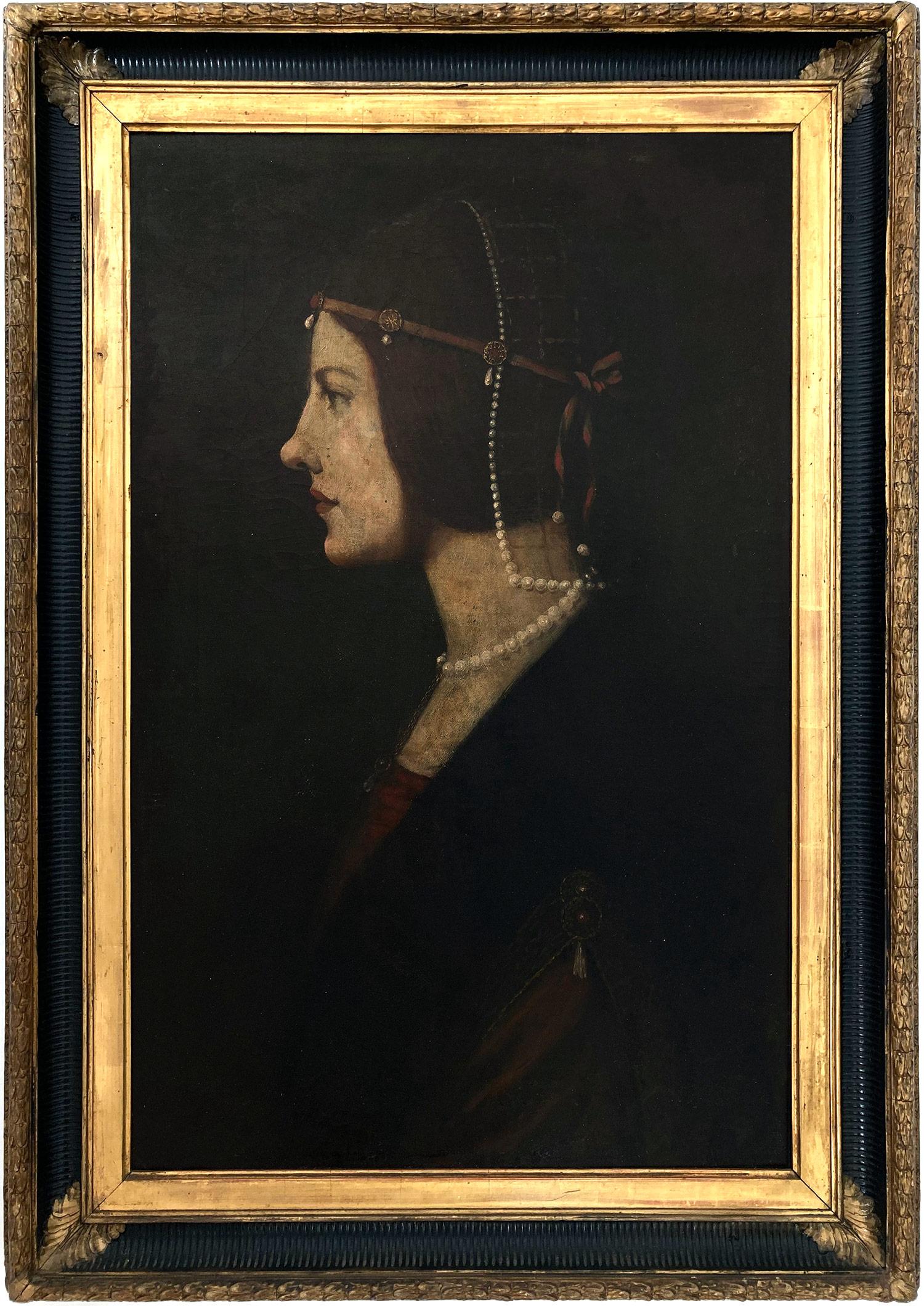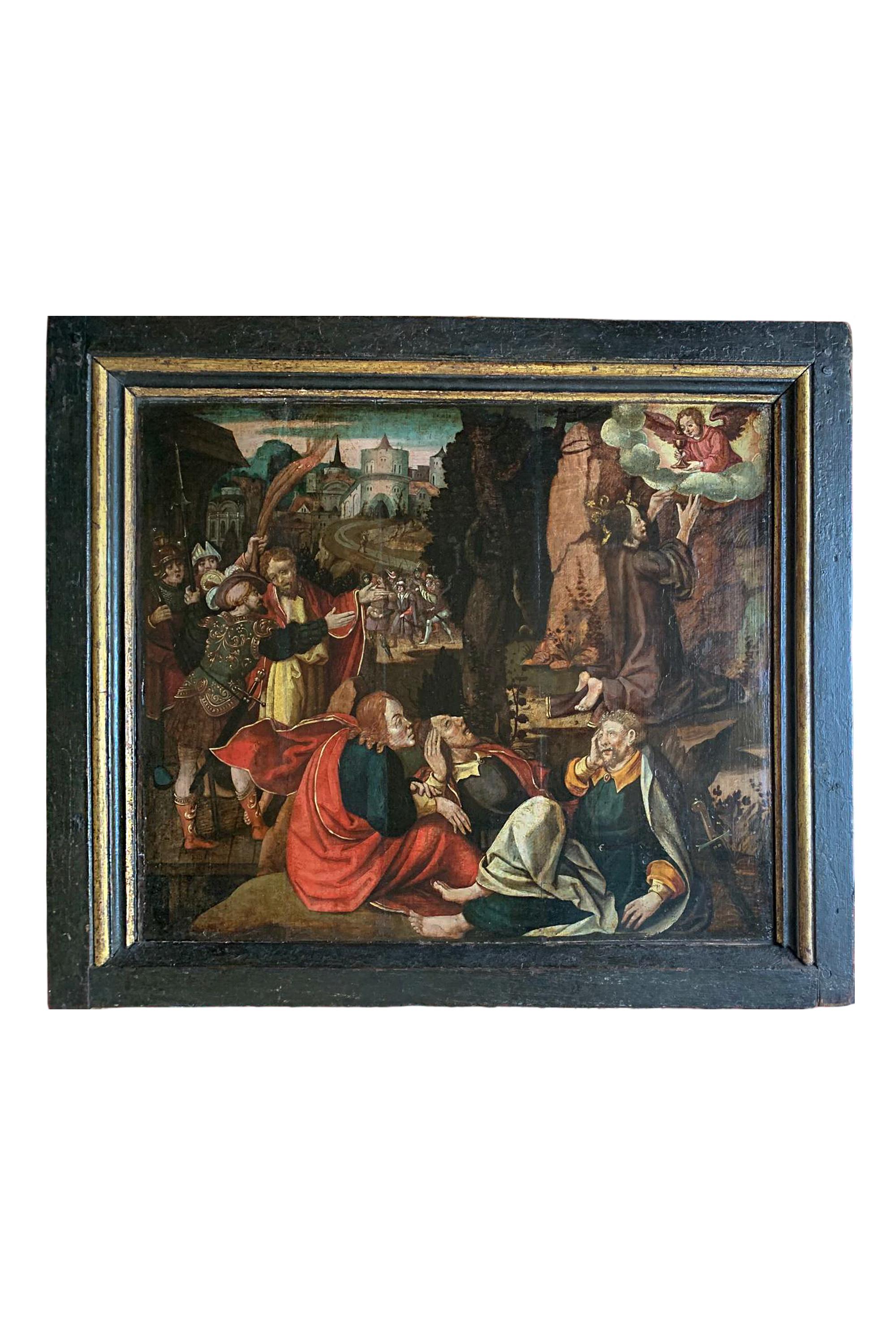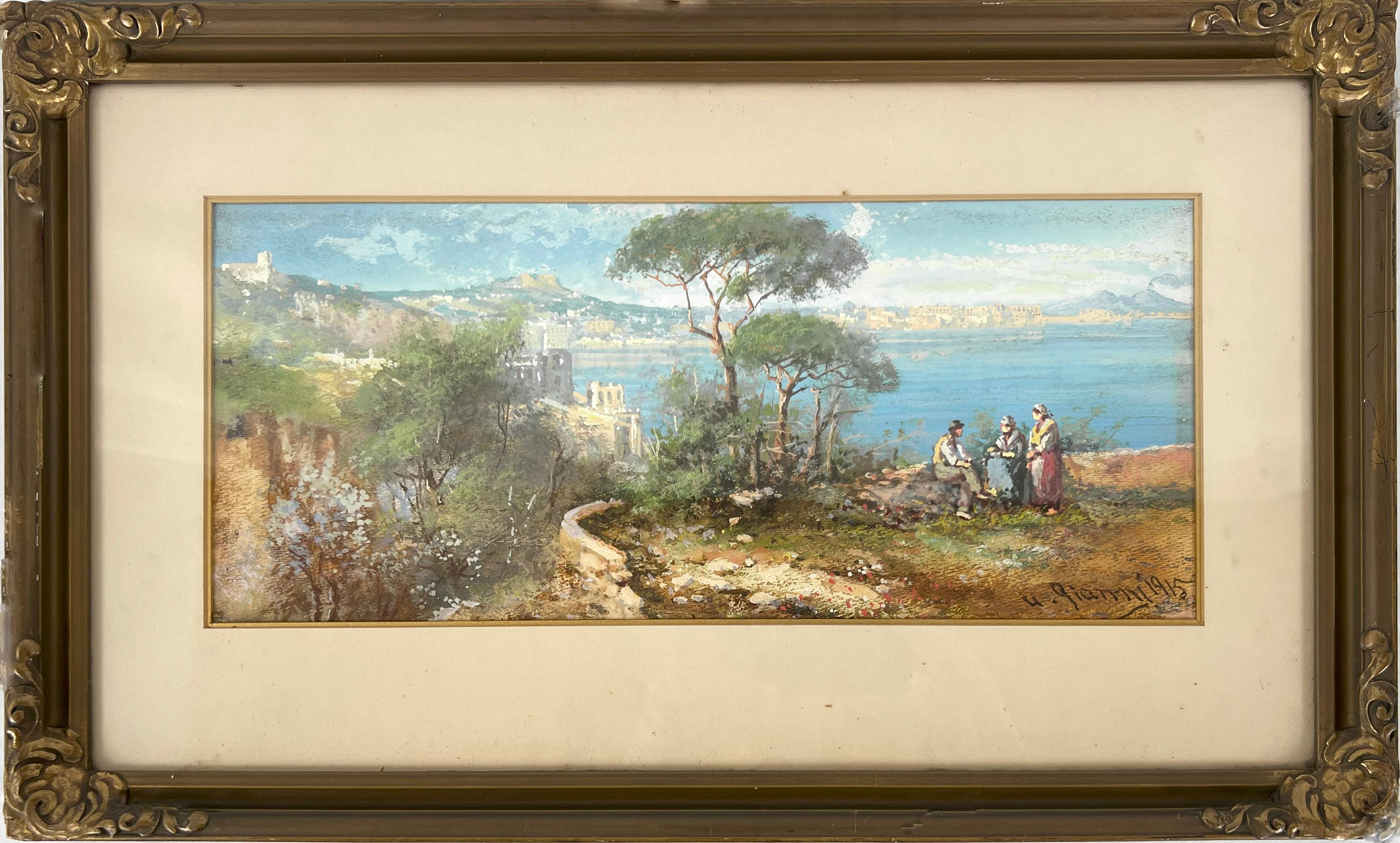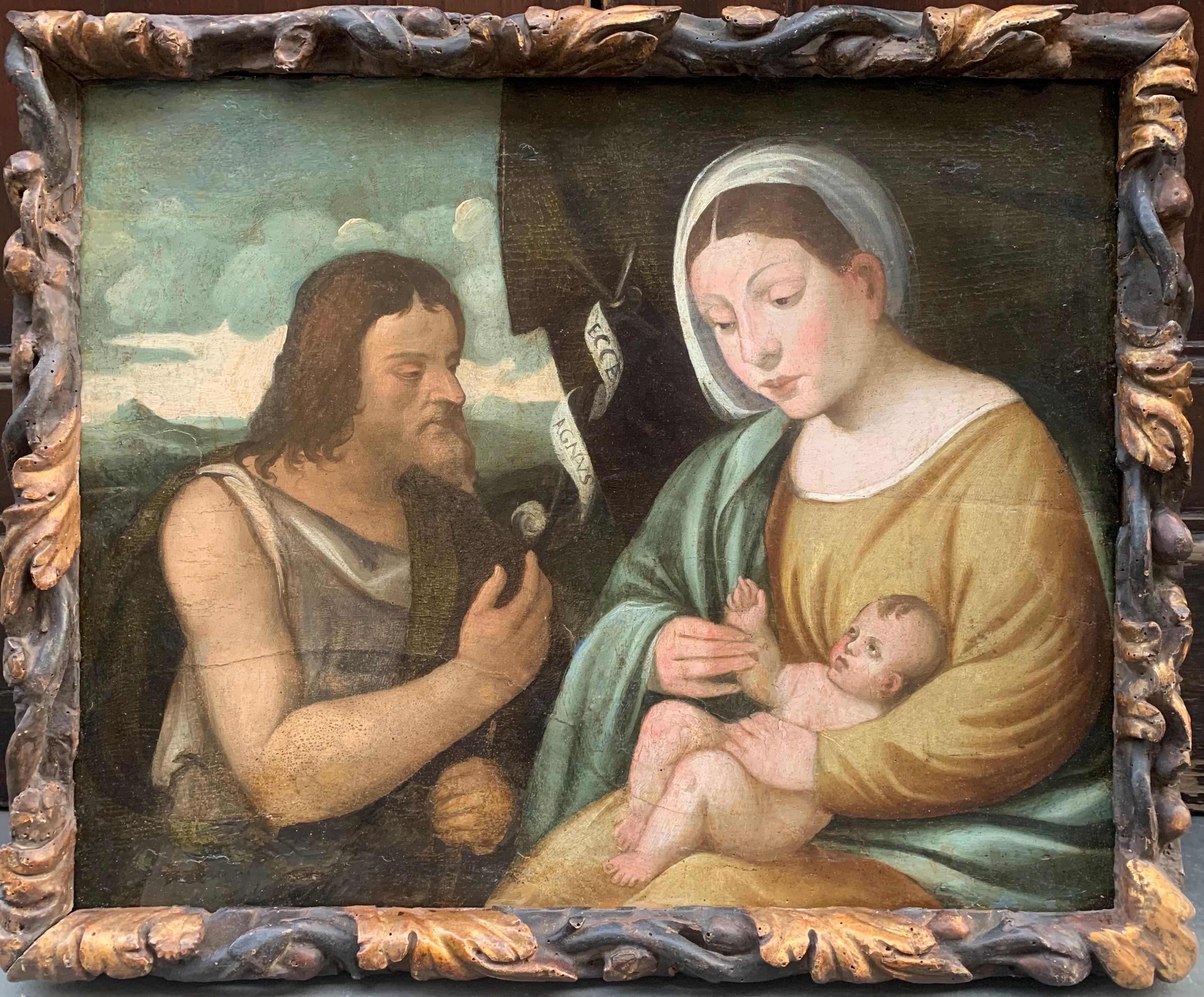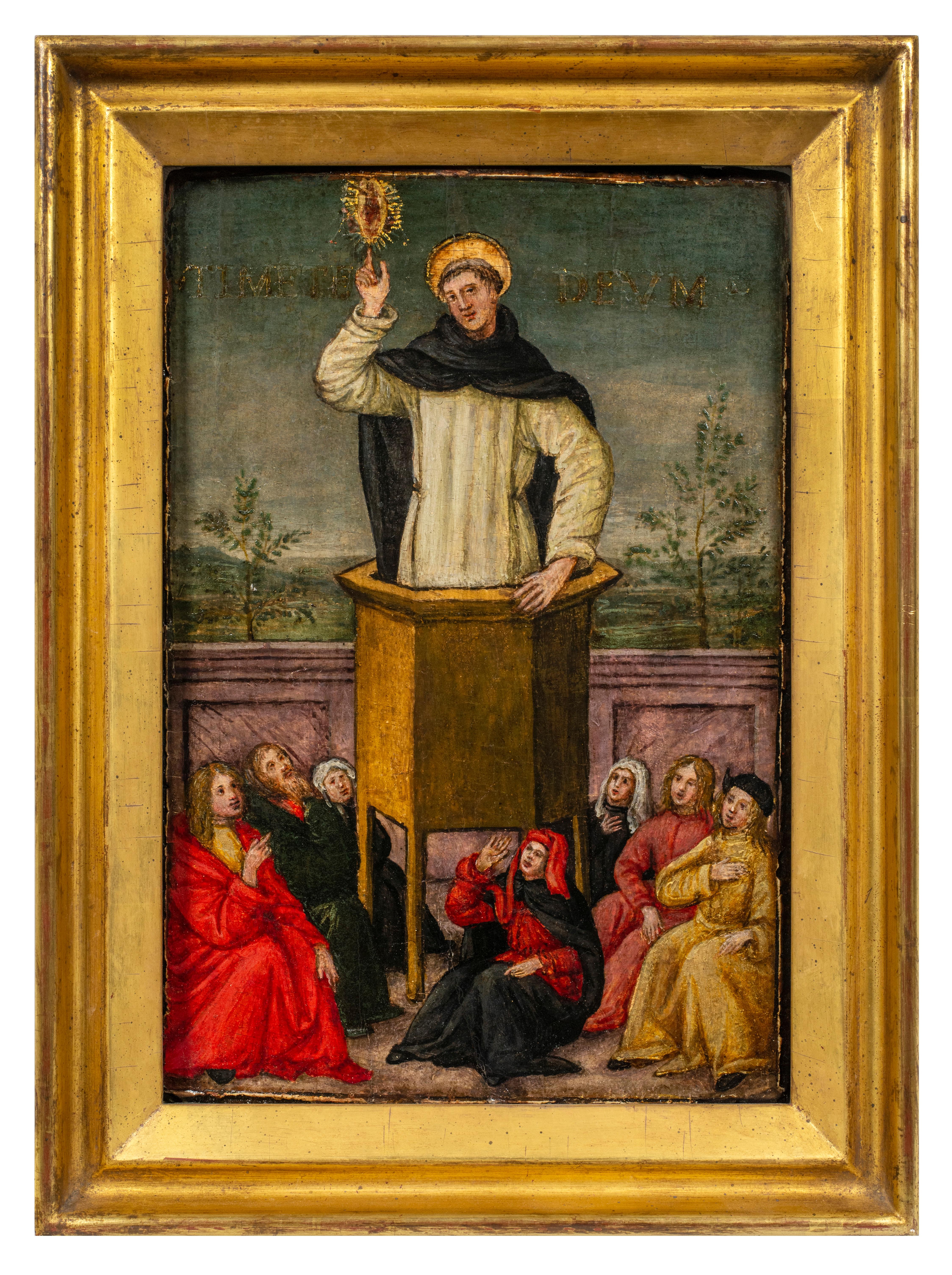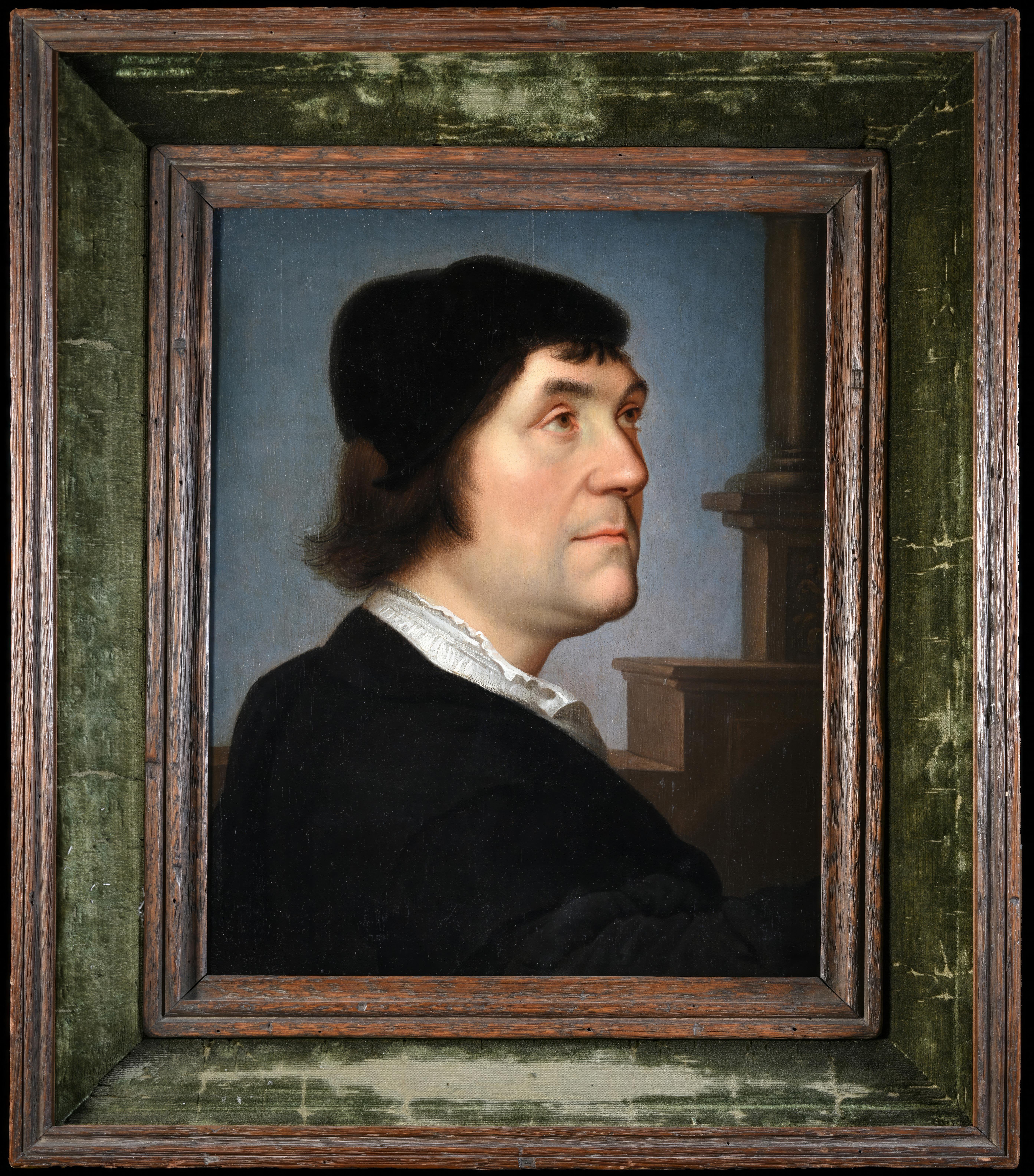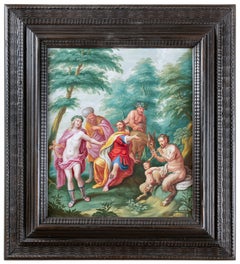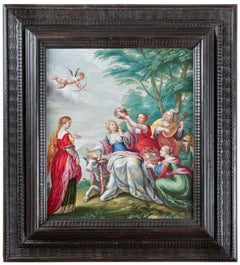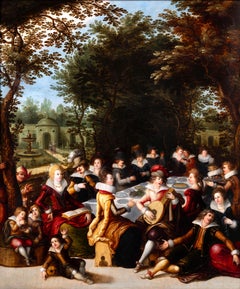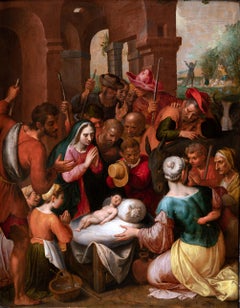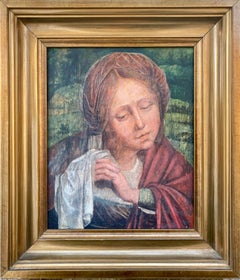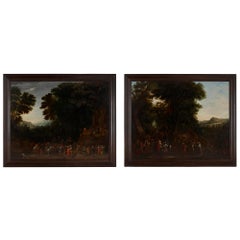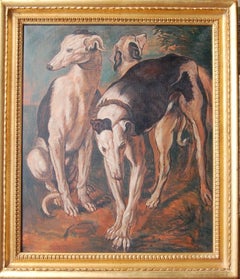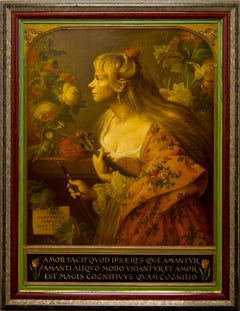16th c. Flemish school, Renaissance, c. 1580, Venus and Mars surprised by Vulcan
Want more images or videos?
Request additional images or videos from the seller
1 of 10
16th c. Flemish school, Renaissance, c. 1580, Venus and Mars surprised by Vulcancirca 1580
circa 1580
$8,466.96List Price
About the Item
- Creation Year:circa 1580
- Dimensions:Height: 25.2 in (64.01 cm)Width: 30.3 in (76.97 cm)
- Medium:
- Movement & Style:
- Circle Of:Jacob de Backer (1555 - 1585)
- Period:
- Condition:Professionnaly restored, ready to be hanged on the wall.
- Gallery Location:PARIS, FR
- Reference Number:1stDibs: LU2433211889722
About the Seller
No Reviews Yet
Vetted Professional Seller
Every seller passes strict standards for authenticity and reliability
1stDibs seller since 2023
17 sales on 1stDibs
Authenticity Guarantee
In the unlikely event there’s an issue with an item’s authenticity, contact us within 1 year for a full refund. DetailsMoney-Back Guarantee
If your item is not as described, is damaged in transit, or does not arrive, contact us within 7 days for a full refund. Details24-Hour Cancellation
You have a 24-hour grace period in which to reconsider your purchase, with no questions asked.Vetted Professional Sellers
Our world-class sellers must adhere to strict standards for service and quality, maintaining the integrity of our listings.Price-Match Guarantee
If you find that a seller listed the same item for a lower price elsewhere, we’ll match it.Trusted Global Delivery
Our best-in-class carrier network provides specialized shipping options worldwide, including custom delivery.More From This Seller
View AllThe Musical Contest between Apollo and Marsyas, signed P. Sion, Antwerp 17th c.
Located in PARIS, FR
The Musical Contest between Apollo and Marsyas,
by Peter Sion (Antwerp, 1624-1695)
Signed in the lower right corner P. Sion
17th century Antwerp School
Oil on copper, dim. h. 53 cm, ...
Category
17th Century Old Masters Figurative Paintings
Materials
Oak, Oil, Wood Panel
The Rape of Europa, signed Peter Sion (1624-1695), Antwerp, 17th century
Located in PARIS, FR
The Rape of Europa
By Peter Sion (Antwerp, 1624-1695)
Signed in the lower right corner P. Sion
17th century Antwerp School
Oil on copper, dim. h. 53 cm, w. 45 cm
Moulded and ebonized...
Category
17th Century Old Masters Figurative Paintings
Materials
Oak, Oil, Wood Panel
Feast in the Garden of Love, 17th century Antwerp, Louis de Caullery
Located in PARIS, FR
Louis de Caullery (1582-1621)
Antwerp School early 17th century
Oil on oak panel
Dimensions: h. 51 cm (20.08 in), w. 43 cm (16.93 in)
Ebonized wooden frame
Framed: h. 67 cm (26.38 in...
Category
Early 17th Century Old Masters Figurative Paintings
Materials
Oil, Wood Panel
Cercle of Ambrosius Francken, Adoration of the shepherds, 17th century Antwerp
Located in PARIS, FR
Adoration of the shepherds,
Cercle of Ambrosius Francken,
Early 17th century Antwerp school
Oil on oak panel: h. 55 cm, w. 43 cm (21.65 in x 16.93 in)
17th c. ebonized and moulded f...
Category
Early 17th Century Old Masters Figurative Paintings
Materials
Oil, Wood Panel
Saint Jerome, Antwerp, 16th century, circa 1550, cercle of Lambert Van Noort
Located in PARIS, FR
Saint Jerome in the desert
Cercle of Lambert Van Noort (1520-1571, Antwerp)
Antwerp School, mid-16th century
Oil on oak panel.
Dimensions: panel h. 69 cm (27.16 in), l. 52.5 cm (20.6...
Category
16th Century Old Masters Figurative Paintings
Materials
Oil, Wood Panel
Hieronymus FRANCKEN III - The Denial of Saint Peter, 17th c. Antwerp school
Located in PARIS, FR
Hieronymus FRANCKEN III (Antwerp 1611 - 1671)
17th century Antwerp School
The Denial of Saint Peter
Oil on panel, dim. h. 53 cm, l. 76 cm
Framed, h. 82 cm, l. 106 cm
Sold with the ...
Category
Mid-17th Century Old Masters Figurative Paintings
Materials
Oil, Wood Panel
You May Also Like
Holy Woman, after Quentin Matsys penitent Saint Magdalene master copy
Located in Norwich, GB
A stunning copy of the Northern Renaissance masterpiece "Maddalena Dolente" by Quentin Matsys (1466-1530) which is in the collection of the Gemäldegalerie Berlin. Beautifully execut...
Category
Mid-20th Century Northern Renaissance Figurative Paintings
Materials
Oil, Wood Panel
Two oil on panel Old Master landscape paintings by Johannes Jakob Hartmann
Located in London, GB
Two oil on panel Old Master landscape paintings by Johannes Jakob Hartmann (Bohemian, 1680-1730)
Bohemia, early 18th Century
Panel: Height 73c...
Category
Early 18th Century Northern Renaissance Landscape Paintings
Materials
Oil, Wood Panel
Three Greyhounds, Contemporary Copy of work by J Snyders 1650
By Jonathan Adams
Located in Brecon, Powys
Original work by J Snyders 1650:
A really eye-catching copy on canvas of this hunting scene originally by Snyders.
Artist Biography:
Jonathan Adams has been producing museum standar...
Category
2010s Northern Renaissance Animal Paintings
Materials
Canvas, Oil
Eva With Violin
By Cornelis Le Mair
Located in Atlanta, GA
Item is in excellent condition and has only been displayed in a gallery setting. This painting was procured direct from the artist's studio.
Cornelis le Mair is truly a renaissance man, encompassing all disciplines of the arts. He enjoys painting, drawing, writing, architecture, sculpture, and interior design.
Le Mair was born in Eindhoven, The Netherlands in 1944. He began drawing and painting at the young age of five and while in kindergarten, he was often made to show his paintings in other classes even though he was shy about doing so. “When I could not play outside because of bad weather, I would sit in my bedroom and would draw.” His early art studies were widely influenced by the Rembrandt exhibit in the Rijksmuseum (1956) that he attended with his father. There le Mair was inspired by the Old Masters and “the desire to unravel all the mysteries hidden under the cracked varnish” began.
Already having painted a lifesize copy of “The Nightwatch” on the wall of his bedroom, le Mair was continually driven by the Rembrandt exhibit. He began to experiment with resins, pigments and oils in order to hone and perfect the technique of the old masters. He studied drawings and paintings and early on developed the feeling of color and composition.
After completing high school, he worked for a short period as a designer of woven fabrics. Although his heart desired to paint, he enjoyed having a pencil and brush in hand and a case full of art books and says, “This treasure of inspiring information took me further on track to the traditional trade.”
At this same time, le Mair’s artistic endeavors led him to learn the art of music. First learning to play the guitar from friends, he began performing at youth centers. This love of music expanded into him learning to play the mandolin, turning lye, banjo, and bagpipes.
Just after his eighteenth birthday, le Mair was accepted into military service where his lack of conforming led him to a maximum solitary confinement sentence. After a month in training, the army physician and le Mair agreed that he was born to be an artist and released le Mair from military services.
Once he returned home, with the encouragement from his parents, le Mair began his art schooling at the Art Academy (Kustacademie) in ‘s-Hertogenbosch, The Netherlands. There he found that the school was geared for modernism and after painting a portrait of a fellow classmate, his teachers advised le Mair to look for a school where the traditional ideas were still taught. Longing to study the classical arts, he applied and was accepted to the Academy of Fine Arts (Koninklijke Kunstacademie) in Antwerp, Belgium in 1965. After studying under Professor Victor Dolphijn, le Mair graduated cum laude in portrait and figure paintings in 1968. He was then promoted to study as a student of the Higher Institute, a structure at a higher university level where he studied under Rik Slabbinck...
Category
1990s Northern Renaissance Interior Paintings
Materials
Board, Oil
$35,000 Sale Price
53% Off
“Money Lenders” after Flemish Painter Quentin Matsys (1466-1530)
Located in San Francisco, CA
Well-fed, well-dressed, and well satisfied, counting and accounting for the money. The unknown painter--although the name Quentin Matsys was scratched into the verso of this work pro...
Category
19th Century Northern Renaissance Figurative Paintings
Materials
Copper
Copy of "Portrait of Beatrice dʼEste" by Leonardo da Vinci created 15th Century
Located in New York, NY
A masterful copy by an unknown artist, after the portrait of "Beatrice d'Este" by Leonardo Da Vinci also known as ‘Portrait of a Lady’ or ‘La Dama con la reticella di perle (The Lady With a Pearl Hairnet)’. The original work originally created in the 15th Century is currently on display in the Pinacoteca Ambrosiana Museum of Milan. Beatrice d'Este was the Duchess of Bari/Milan and was believed to be one of the most attractive princesses of the Renaissance. Her impeccable style won her many admirers throughout Italy and France, and she became a trendsetter of the highest order. This copy of the original painting, is an oil on canvas done in the 18th Century, and in this exquisite portrait, the artist has masterfully depicted the fine details with draped hair, pearls, royal dress, ornate headgear and sumptuous jewelry in front of a dark background. Once again, capturing the imagination with another enigmatic smile. It comes housed in an elegant period giltwood frame with ebonized trims and ready to be displayed with hanging wire on verso.
Art measures 28 x 18 inches
Frame measures 34.5 x 24.5 inches
There is much debate and controversy over who actually painted the "Beatrice d'Este" was it Leonardo da Vinci (1452–1519), or Giovanni Ambrogio de Predis (1455–1508). So we may never know who executed the original portrait which hangs in the museum, but that need not deter from an appreciation of its singularity. Following the portraiture convention established by painters of the Quattrocentro, the artist has chosen to portray his sitter in profile. In doing so, he magnificently captures the essence of his sitter, a girl on the threshold of womanhood. Bedecked in the adornments—silk, velvet, pearls and embroidery (brocade) crafted of spun gold threads—afforded her by birthright and marriage, Beatrice looks forward in noble serenity. And at the same time her profile with its upturned nose and slight smile betrays an innocence that must have been the basis of the oft-repeated epithet: la più zentil donna in Italia” (“the sweetest lady in Italy”).
It is believed the lady is Beatrice d'Este (1475-1497), duchess of Bari and later of Milan, the wife of Ludovico Sforza (known as "il Moro"). One of the most beautiful princesses of the Italian Renaissance, she was known for her good taste in fashion. Beatrice was a member of the Este-Sforza family, which joined by marriage two of the oldest reigning and already powerful houses in Italy. The house of Este, which held court in Ferrara, traced its lineage to the 11th century Dukes of Saxony and Bavaria. Beatriceʼs father, Ercole I ruled the Ferrara commune for 34 years, catapulting the city-state (and the Estes with it) to an unmatched level of economic prosperity and cultural prominence. The family was renowned for its love of letters and patronage of the arts.
The first time Leonardo da Vinci’s name resounded in the Ambrosiana, it was through the pen of its founder, Cardinal Federico Borromeo, who attributed this little panel to the great Master, describing it as “A portrait of a Duchess of Milan, by the hand of Leonardo”. Following the Cardinal’s statement, the portrait was for long assumed to depict Beatrice d’Este, the wife of Ludovico il Moro. However, scholars have recently been more cautious and vague in their statements, with regard to both the artist (anonymous Lombard or Emilian...
Category
18th Century Northern Renaissance Portrait Paintings
Materials
Canvas, Oil
Recently Viewed
View AllMore Ways To Browse
Used Theater Curtain
Bacchus Paintings
Northern Lights Painting
Deadly Sins
Antique Chamber Pots
Red Shirt Women
Religious Triptych
Antique Triptych Mirror
Oak Church Cabinets
Jesus Tomb
16th Century Italian Religious Painting
Hendrick Goltzius
Antique Printer Cabinets
Painting Of Mars And Venus
Antique Religious Triptych
Italian Renaissance Triptych
C Capodimonte
Chamber Pot Cabinet
